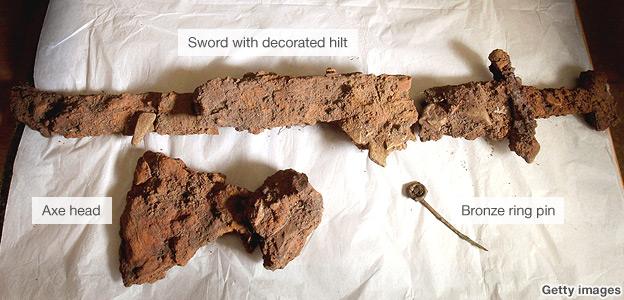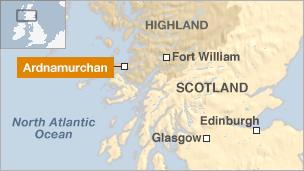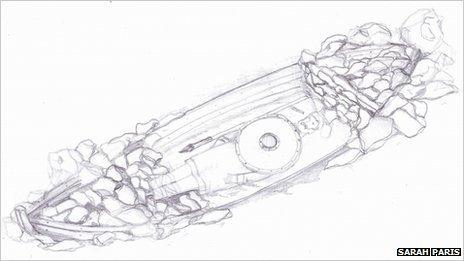Ardnamurchan Viking boat burial discovery 'a first'
- Published

The UK mainland's first fully intact Viking boat burial site has been uncovered in the west Highlands, archaeologists have said.
The site, at Ardnamurchan, is thought to be more than 1,000 years old.
Artefacts buried alongside the Viking in his boat suggest he was a high-ranking warrior.
Archaeologist Dr Hannah Cobb said the "artefacts and preservation make this one of the most important Norse graves ever excavated in Britain".
Dr Cobb, from the University of Manchester, a co-director of the project, said: "This is a very exciting find."

She has been excavating artefacts in Ardnamurchan for six years.
The universities of Manchester, Leicester, Newcastle and Glasgow worked on, identified, or funded the excavation.
Archaeology Scotland and East Lothian-based CFA Archaeology have also been involved in the project which led to the find.
The term "fully-intact", used to describe the find, means the remains of the body along with objects buried with it and evidence of the boat used were found and recovered.
Dr Oliver Harris from the University of Leicester says the burial artefacts belonged to a high-status individual
The Ardnamurchan Viking was found buried with an axe, a sword with a decorated hilt, a spear, a shield boss and a bronze ring pin.
About 200 rivets - the remains of the boat he was laid in - were also found.
Previously, boat burials in such a condition have been excavated at sites on Orkney.
Until now mainland excavations were only partially successful and had been carried out before more careful and accurate methods were introduced.
Other finds in the 5m-long (16ft) grave in Ardnamurchan included a knife, what could be the tip of a bronze drinking horn, a whetstone from Norway, a ring pin from Ireland and Viking pottery.
'The icing'
Dozens of pieces of iron yet to be identified were also found at the site.
The finds were made as part of the Ardnamurchan Transition Project (ATP) which has been examining social change in the area from the first farmers 6,000 years ago to the Highland Clearances of the 18th and 19th centuries.

An artist's impression shows how the Viking would have lain in the burial boat
Viking specialist Dr Colleen Batey, from the University of Glasgow, has said the boat was likely to be from the 10th Century AD.
Dr Oliver Harris, project co-director from the University of Leicester's School of Archaeology and Ancient History, reinforced the importance of the burial site.
He said: "In previous seasons our work has examined evidence of changing beliefs and life styles in the area through a study of burial practices in the Neolithic and Bronze age periods 6,000-4,500 years ago and 4,500 to 2,800 years ago respectively.
"It has also yielded evidence for what will be one of the best-dated Neolithic chambered cairns in Scotland when all of our post-excavation work is complete.
"But the find we reveal today has got to be the icing on the cake."
- Published31 August 2011
- Published5 May 2011
- Published5 July 2010